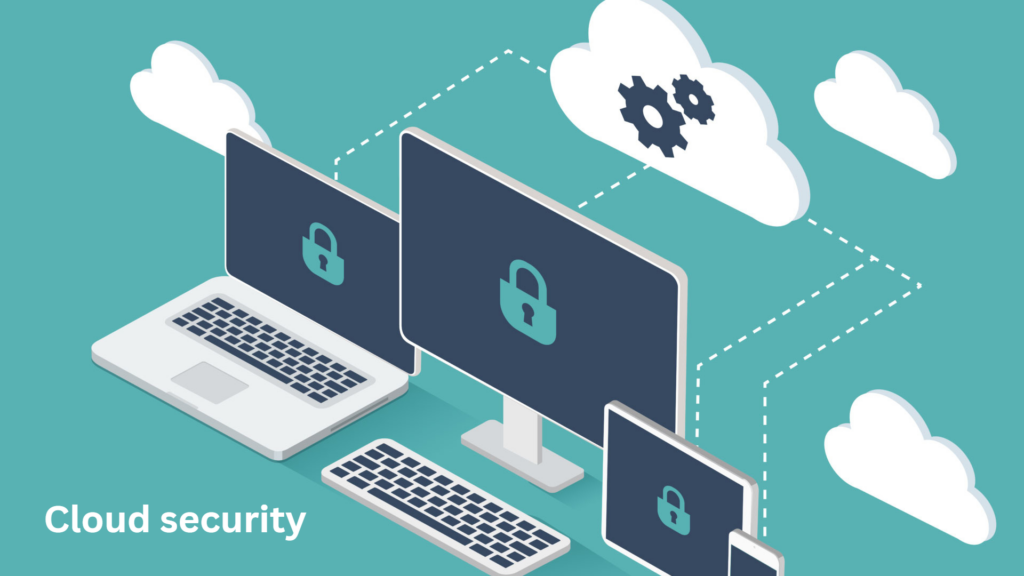Cloud security is like an umbrella: Cloud Cyber Security.
In an article published by Harvard Business Review, cloud security is compared to an umbrella, providing protection against various types of cyber threats. Cloud cybersecurity has become essential for businesses, especially those that rely heavily on cloud-based services. As companies increasingly move their operations to the cloud, it’s important to implement robust security measures to protect sensitive data and applications. Cloud security encompasses a wide range of practices, from identity and access management to data encryption and threat detection. With the rise of remote work and the growing prevalence of cyber attacks, cloud security has never been more critical. As businesses navigate the complexities of the digital landscape, investing in cloud security will become increasingly vital to safeguard against potential cyber threats.
Why Cloud cyber security is Essential for Businesses
Cloud cyber security is essential for businesses because it helps to protect sensitive data and systems from cyber threats. As more and more companies shift their operations to the cloud, cyber criminals are increasingly targeting cloud infrastructure and applications. A successful cyber-attack can result in the theft or compromise of confidential information, financial losses, reputational damage, and legal liabilities. Adequate cloud cyber security is essential to protect against the increasing number and complexity of cyber threats faced by businesses and organizations that rely on cloud computing.
Effective cloud cyber security measures can help to mitigate these risks by ensuring that data is protected, access to cloud resources is controlled and monitored, and vulnerabilities are regularly identified and addressed. Additionally, cloud cyber security helps businesses to comply with regulatory requirements, such as data protection regulations, that are essential to maintain the trust of customers and partners.
By investing in cloud cyber security, businesses can safeguard their data and reputation, reduce the risk of financial losses, and ensure business continuity during a cyber-attack. Ultimately, cloud cyber security is essential to protect the business from the increasing number and severity of cyber threats in the modern digital landscape.

Overview of potential security threats in cloud environments
Cloud environments are vulnerable to various security threats, including:
- Data Breaches: Hackers may gain unauthorized access to cloud-based databases, storage, or applications to steal sensitive data such as personally identifiable information (PII), financial data, or intellectual property.
- Insider Threats: Malicious insiders, such as employees or contractors with privileged access, can intentionally or accidentally compromise the security of cloud resources, such as by stealing or deleting data.
- Malware Attacks: Cyber criminals can use malware, such as viruses, worms, or Trojan horses, to infect cloud systems and steal data or disrupt cloud services.
- Distributed Denial of Service (DDoS) Attacks: Detractors can use botnets or other techniques to overwhelm cloud systems with traffic, causing them to become unresponsive and unavailable to legitimate users.
- Identity and Access Management (IAM) Threats: Weak authentication mechanisms or improper IAM policies can enable unauthorized users to access cloud resources, potentially leading to data breaches or other security incidents.
- Data Loss: Cloud data can be lost due to accidental or intentional deletion, system failures, or natural disasters.
- Regulatory Compliance Violations: Failure to comply with industry regulations or data protection laws can result in legal liabilities and reputational damage.
To mitigate these threats, businesses must implement robust cloud security measures, including encryption, access controls, network security, and incident response plans. Regular security assessments, vulnerability scans, and penetration tests are also essential to identify and address security vulnerabilities in the cloud environment.
Examples of high-profile cloud security breaches
There have been several high-profile cloud security breaches in recent years. Here are a few examples:
- Capital One (2019): A hacker gained access to more than 100 million customers’ personal information by exploiting a vulnerability in a firewall. The hacker accessed sensitive data, including names, addresses, credit scores, and Social Security numbers.
- Dropbox (2012): In 2012, it announced that it experienced a data breach that affected more than 68 million user accounts. The breach occurred because an employee’s password was stolen, giving the attacker access to sensitive data stored on the cloud.
- Target (2013): Target’s point-of-sale (POS) systems were breached in 2013, exposing the credit and debit card information of more than 40 million customers. The attackers gained access to Target’s systems by stealing the login credentials of a third-party vendor that had access to the retailer’s network.
- iCloud (2014): In 2014, a group of hackers leaked private photos of several celebrities stored on Apple’s iCloud service. The attackers accessed the accounts by exploiting weak passwords and security questions.
These high-profile breaches illustrate the potential impact of cloud security incidents, including financial losses, reputational damage, and legal liabilities. They also highlight the importance of implementing robust security measures in the cloud environment to prevent such incidents.
Best Practices for Cloud Cyber Security
To ensure adequate cloud cyber security, businesses should implement the following best practices:
- Choose a Trusted Cloud Service Provider: Businesses should choose a cloud service provider (CSP) with a proven track record of implementing robust security measures and maintaining compliance with industry standards and regulations.
- Implement Strong Authentication and Access Controls: Strong authentication mechanisms, such as multi-factor authentication (MFA) and password policies, should be implemented to prevent unauthorized access to cloud resources. Access controls should also be implemented to limit resource access based on the principle of least privilege.
- Encrypt Data at Rest and Transit: Data should be encrypted at rest and in transit to prevent unauthorized access and theft. Encryption should be implemented using robust encryption algorithms and critical management practices.
- Regularly Update and Patch Cloud Infrastructure: Cloud infrastructure should be updated and patched periodically to ensure that security vulnerabilities are identified and addressed on time.
- Monitor Cloud Infrastructure for Security Threats: Businesses should monitor cloud infrastructure for security threats, such as malware, DDoS attacks, and data breaches. This can be achieved through security information and event management (SIEM) tools, intrusion detection systems (IDS), and log analysis.
- Implement Data Backup and Disaster Recovery Plans: Businesses should implement data backup and disaster recovery plans to ensure that data can be regained during a security incident or natural disaster.
- Conduct Regular Security Assessments and Audits: Regular security assessments and audits should be conducted to identify and address security vulnerabilities in the cloud environment. This can be achieved through vulnerability scans, penetration tests, and compliance audits.
By implementing these best practices, businesses can ensure their cloud infrastructure and applications are secure and protected from cyber threats. Additionally, companies should remain vigilant and adapt their security measures to the evolving threat landscape to maintain adequate cloud cyber security.
Conclusion
In conclusion, cloud cyber security is critical for businesses that rely on the cloud for data storage and access. By understanding the shared responsibility model, implementing best practices for cloud security, and choosing a reliable cloud service provider, businesses can reduce the risk of cyber threats and protect their valuable data. For more knowledge read our blogs on our website Auxin.io.







